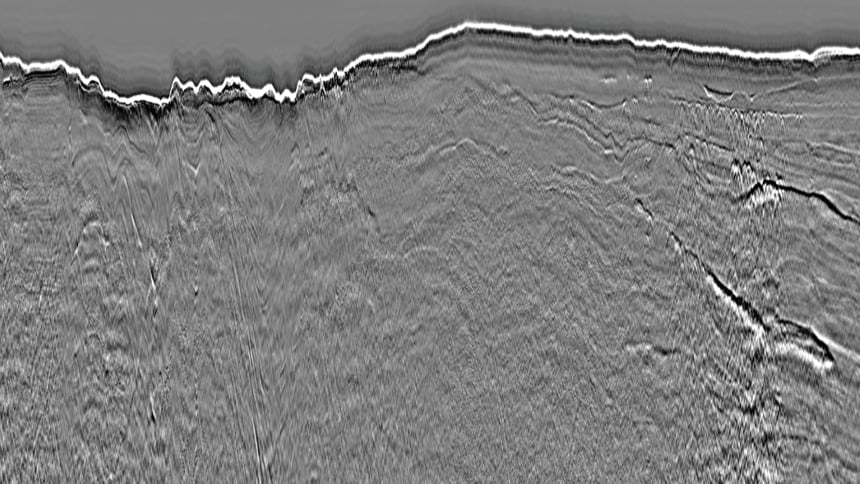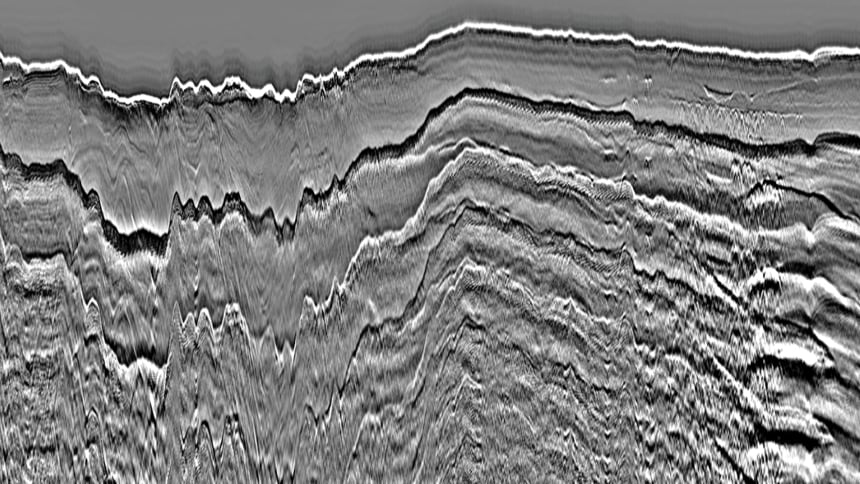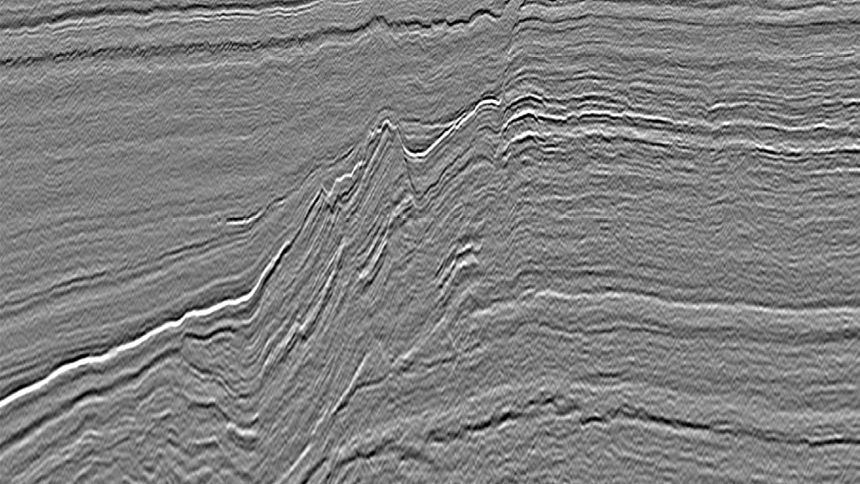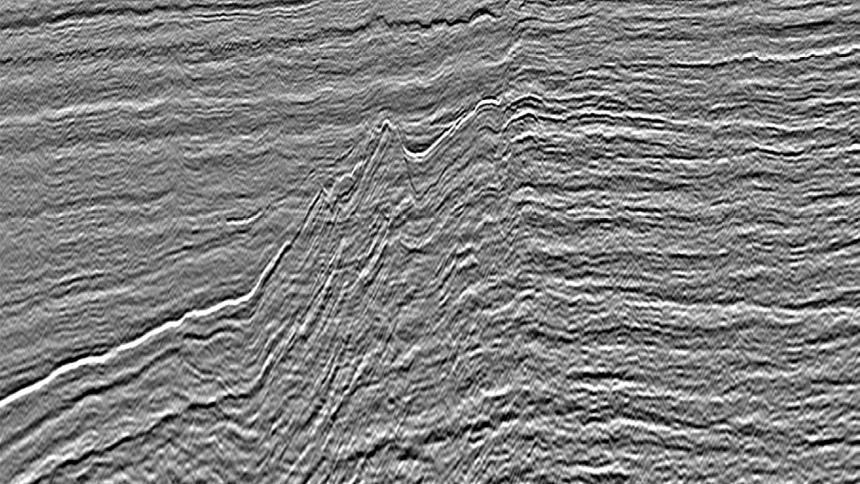- Solutions for any geologic environment, regardless of its complexity: tailored, solution-driven approach
- Flexible workflows: combination of data-driven and model-driven approaches
- True 3D solutions: accommodate complex geological settings where 3D effects typically magnify the complexity of multiples
- Accurate: honors the true azimuth of input traces by predicting multiples at the exact input source and receiver locations
- Robust in shallow water: multiples can be modeled from reflectors with poor illumination or in cases of sparse shot sampling
Convolutional method | 3D convolutional surface-related multiple prediction / elimination (SRMP / SRME) is a fully data-driven demultiple technique using cross-convolution of the recorded data either with itself or with an estimate of the primary wavefield.
Wavefield extrapolation method | 3D wavefield extrapolation-based SRMP / SRME is performed by propagating the recorded wavefield using the one-way wave equation.
Use of advanced curvelet domain multi-dimensional adaptive subtraction provides improved removal of the modeled multiples compared to traditional time-space domain applications while ensuring protection of primary energy. Non-surface related multiple energy (e.g., interbed or diffracted multiples) can also be attenuated using 3D solutions. In shallow water, PGS’ separated wavefield imaging (SWIM) can produce an accurate reflectivity cube that can be input into 3D wavefield extrapolation-based SRME.
Adaptable and Proven Workflows
Demultiple techniques such as 3D convolutional SRME and 3D wavefield extrapolation modeling can accurately model complex surface-related multiples, particularly in terms of their kinematics. However, the high frequency content in the multiple models is often traditionally lacking due to stacking and/or convolutional operations, or inadequate modeling of out-of-plane diffracted multiples. Several residual demultiple processes are available to complement the multiple modeling techniques.
SWIM can overcome the lack of a good reflectivity model in shallow water. Within SWIM, the down-going portion of the wavefield recorded at the receiver is used as a virtual imaging source, improving near-surface illumination and angular diversity, further attenuating the footprint of the acquisition geometry and enabling an uplift in the quality of the near-surface image and of the resulting multiple prediction.
PGS’ implementations of internal multiple elimination (IME) for 1D, 2D and 3D media gives users the option to use either boundary or pseudo-boundary approach for the prediction of internal multiples. After the identification of the boundary or pseudo-boundary, the prediction process is fully automated.
Contact a PGS expert
If you have a question related to our Imaging & Characterization services or would like to request a quotation, please get in touch.



